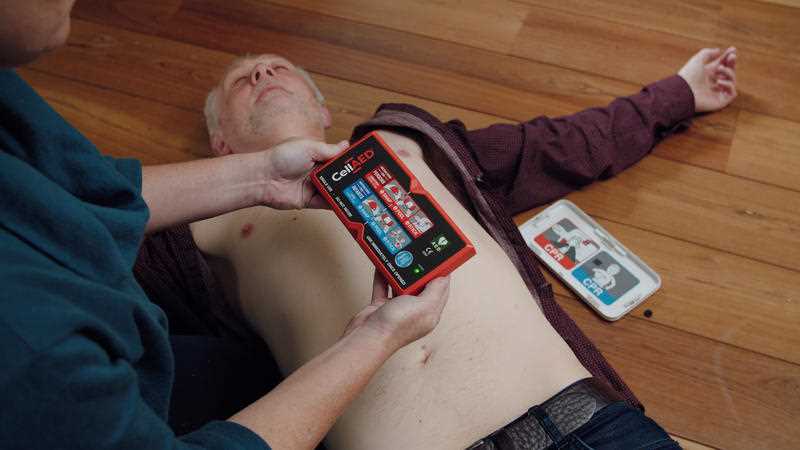A Sydney man has developed the world’s first personal defibrillator after almost losing his wife to cardiac arrest.
Sarah Casey, who was 39, was lying in bed next to her husband Donovan when she started making unusual clucking noises.
He sprang into action, calling an ambulance and performing CPR until paramedics arrived, which was quickly because they were around the corner.
Luckily, Sarah was one of the few who survive, and Mr Casey has made it his mission to help save the lives of others by developing CellAED.
The unit, designed using the technology of Australian med-tech start-up Rapid Response Revival, is portable, cheaper and much smaller than a standard defibrillator.
It’s just achieved listing on the ARTG and will soon be available to the Australian public for use in their homes for as little as one tenth of the cost of currently available automated external defibrillators (AEDs).
Sudden cardiac arrest is the world’s biggest causes of premature death, killing between seven and nine million people every year.
At the same time, more than 80 per cent of sudden cardiac arrests occur in the home.
Because the chances of being revived following a cardiac arrest drops 10 per cent for every minute without defibrillation, the response needs to be rapid, Mr Casey says.
“Sudden cardiac arrest has a survival rate of less than one per cent,” he said.
“This is because it kills so quickly and because most witnesses to a sudden cardiac arrest don’t have the skills or access to an AED to help save a life.”
He said his device was fully automated, designed to detect a shockable heart rhythm and deliver shocks when needed to keep a patient’s heart beating before first responders arrive.
While most AEDs cost more than $3000, the CellAED personal defibrillator will sell from $299.
AAP
Get all the latest Canberra news, sport, entertainment, lifestyle, competitions and more delivered straight to your inbox with the Canberra Daily Daily Newsletter. Sign up here.



